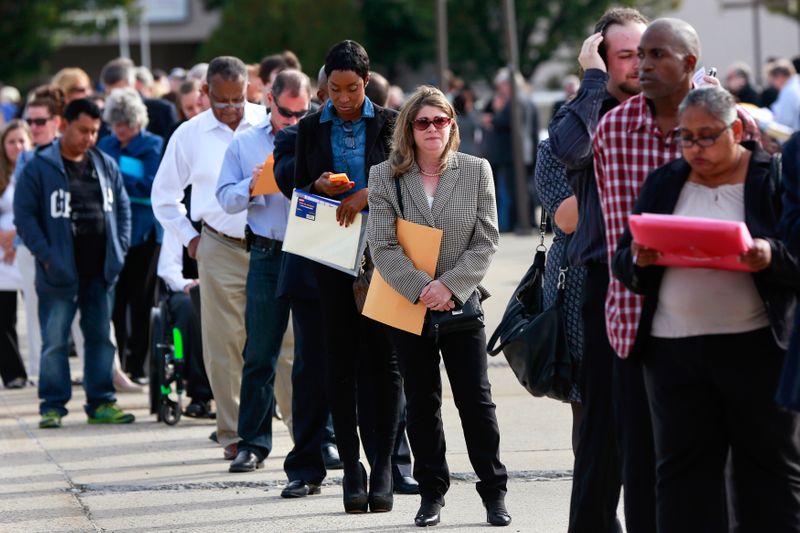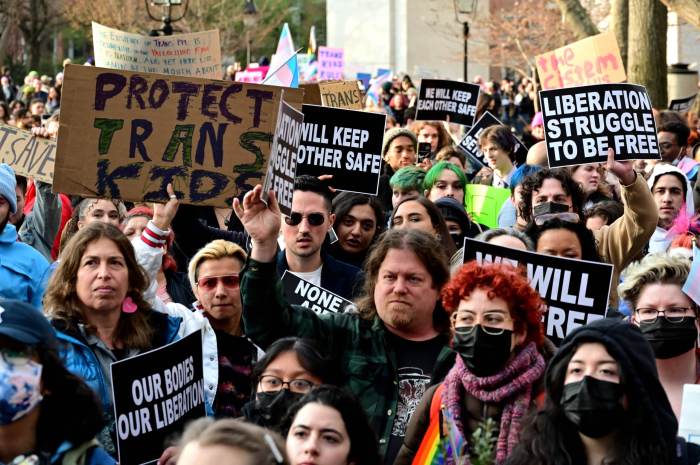WASHINGTON (Reuters) – The number of Americans filing first-time applications for unemployment benefits unexpectedly increased last week, raising the possibility of a second straight month of tepid job growth despite declining new COVID-19 infections.
The weekly unemployment claims report from the Labor Department on Thursday, the most timely data on the economy’s health, could add impetus to President Joe Biden’s push for a $1.9 trillion package to aid the recovery from the pandemic.
At least 18.3 million Americans were receiving unemployment checks at the end of January. Government-funded benefits for millions of these people will expire in mid-March unless Congress approves the Biden administration’s spending plan.
“Robust pandemic aid is precisely the medicine the economy needs to get Americans back where they want to be, at work,” said Andrew Stettner, senior fellow at The Century Foundation.
Initial claims for state unemployment benefits increased 13,000 to a seasonally adjusted 861,000 for the week ended Feb. 13. Data for the prior week was revised to show 55,000 more applications received than previously reported.
There were big jumps in filings in California and Illinois, while claims in Ohio remained elevated.
Graphic: Jobless claims – https://graphics.reuters.com/USA-STOCKS/qmyvmwbbavr/joblessclaims.png
Economists polled by Reuters had forecast 765,000 applications in the latest week. Many were perplexed by the second straight weekly increase in claims, given the declining coronavirus cases, the disbursement of nearly $900 billion in additional rescue aid by the government in late December and the White House’s pending massive stimulus package.
Timely data have shown an improvement in economic activity, with retail sales surging by the most in seven months in January. A Conference Board survey on Thursday showed only 12% of chief executive officers in the first quarter anticipated reducing their workforce over the next 12 months, down from 34% in the prior period.
“Although the economy in the first quarter appears to be rebounding more strongly than expected, the same does not appear to be true of the labor market at this point,” said Conrad DeQuadros, senior economic advisor at Brean Capital in New York.
Stocks on Wall Street were trading lower. The dollar slipped against a basket of currencies. U.S. Treasury prices fell.
PLANT CLOSURES
Some of the increase in claims could be related to the temporary closure of automobile plants beginning last week due to a global semiconductor chip shortage. General Motors announced it would take down production entirely at its Fairfax plant in Kansas City during the week of Feb. 8.
Claims could remain higher after a winter storm walloped Texas and parts of the South this week.
Filings for a government-funded program for the self-employed, gig workers and others who do not qualify for the regular state programs jumped 174,427 to 516,299 last week, which economists blamed on fraud in Ohio. Including this program, 1.4 million people filed claims last week.
Claims remain above their 665,000 peak during the 2007-2009 Great Recession, though they are below the record 6.867 million reported last March when the pandemic hit the United States.
Last week’s claims data covered the period during which the government surveyed businesses for the nonfarm portion of February’s employment report. Though claims have not provided a good signal on job growth because of the shock caused by the pandemic, the continued increase in filings is consistent with weak labor market conditions.
“The claims data are consistent with the downbeat message from labor market indicators at the start of the year,” said Lydia Boussour, lead U.S. economist at Oxford Economics in New York. “While downside risks remain, broader vaccine distribution and increased fiscal support should lead to a marked improvement in labor market trends by the spring and summer.”
The economy created 49,000 jobs in January after shedding 227,000 in December, the first drop in payrolls in eight months.
About 12.3 million of the 22.2 million jobs lost during the pandemic have been recovered. The Congressional Budget Office has estimated employment would not return to its pre-pandemic level before 2024.
Labor market sluggishness is likely to prevent an anticipated acceleration in inflation this year from becoming troublesome. A second report from the Labor Department showed import prices increased by the most in nearly nine years in January, lifted by higher prices for energy products and a weak dollar.
Graphic: Inflation – https://graphics.reuters.com/USA-STOCKS/xklvyoqqkvg/inflation.png
But the economy is steadily improving, with the housing market and manufacturing the main pillars of support.
In a third report, the Commerce Department said permits for future home construction soared 10.4% to a rate of 1.881 million units in January, the highest level since May 2006.
The housing market has outperformed other sectors of the economy during the pandemic, supported by lower mortgages rates and demand for spacious accommodations for home offices and schooling.
“Strength in forward-looking building permits reaffirm that housing sector activity can remain strong into 2021, with new construction, in particular, becoming an engine for growth in the coming months,” said Veronica Clark, an economist at Citigroup in New York.
A fourth report from the Philadelphia Federal Reserve showed its business conditions index slipped to a still solid reading of 23.1 this month from 26.5 in January amid a decline in new orders and shipments. But factories in the region that covers eastern Pennsylvania, southern New Jersey and Delaware boosted employment and increased hours for workers.
Graphic: Philly Fed – https://graphics.reuters.com/USA-STOCKS/qzjvqgnnevx/phillyfed.png
(Reporting By Lucia Mutikani; Editing by Chizu Nomiyama and Andrea Ricci)



















